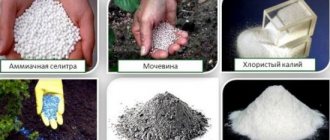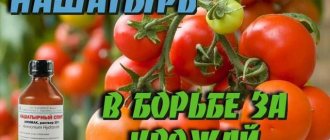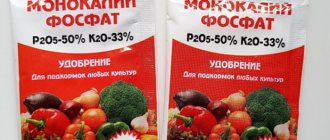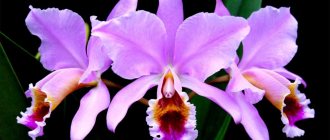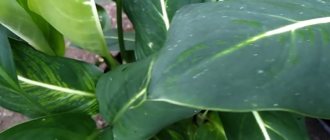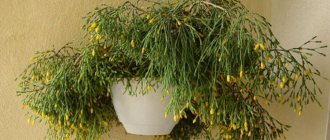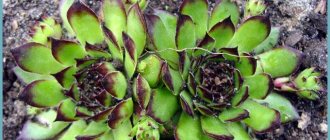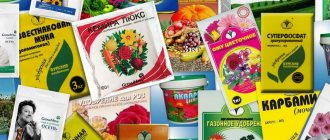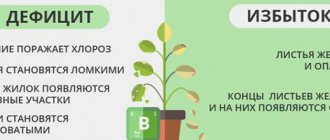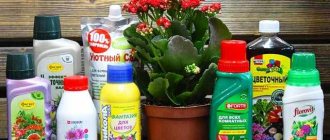The effect of nitrogen fertilizers on plants is difficult to overestimate or overlook. It immediately catches the eye in the form of dark green lush foliage. The application of nitrogen fertilizers in the spring guarantees the proper growth of garden crops, flowers, bushes and trees.
Nitrogen is involved in the formation of protein molecules and is an important element in the composition of chlorophyll, without which the process of photosynthesis is impossible. Signs of nitrogen starvation include yellowing of foliage, stunted plant growth, and premature flowering.
- Nitrogen, phosphorus, potassium - signs of deficiency and excess in plants
What do excess or deficiency of nitrogen, phosphorus and potassium lead to? Find out in our infographic!
Manure and poultry droppings, especially pigeon, chicken and duck, contain some nitrogen. Organic fertilizers containing nitrogen can be obtained by composting plant waste. On average, compost from plants such as lupine and clover contains 0.4-0.7% nitrogen, and from green foliage - about 1%. Plants can obtain the most nitrogen from lake silt - 2% or more.
Typically, plants need additional fertilizing with nitrogen fertilizers, because... nitrogen in the soil becomes available to their roots only after mineralization by microorganisms living in the soil. With proper feeding, plants develop faster, form large dark green foliage, and accumulate protein in the fruits.
But you shouldn’t overdo it with nitrogen fertilizers; this negatively affects the ripening of fruits, since the plants direct all their energy to the formation of green mass. In addition, an overdose of nitrogen in the soil impairs the survival rate of plants during transplantation and inhibits the maturation of wood.
Why do plants need nitrogen?
When assessing the importance of the NPK complex in agriculture, it is customary to assign nitrogen the role of a growth stimulator, phosphorus - flowering, and potassium - fruiting.
In addition to its main role, nitrogen helps to grow not only green mass, but also flowers and fruits. Nitrogen not only increases the size of fruits and vegetables grown, but also their quality. Often, cut areas on trees do not heal for a long time, which negatively affects the frost resistance of the garden. To prevent trees from freezing in winter and contracting black cancer and other diseases, after pruning, the garden needs fertilizing with nitrogen fertilizers.
Complex fertilizers containing nitrogen
Nitrogen primarily affects the formation of green mass and is therefore used in the spring. But plants also need other components that promote growth and development. In particular, in phosphorus, which helps plants set fruit and increases winter hardiness, as well as in potassium, which promotes resistance to diseases and adverse weather conditions. That is why gardeners and gardeners are increasingly choosing complex fertilizers containing three main necessary components (nitrogen-phosphorus, nitrogen-potassium or nitrogen-phosphorus-potassium fertilizers). The most popular today are nitrophoska and azofoska.
Whatever fertilizer you choose, single-component or multi-component, remember that “under-salting is better than over-salting.” Follow the dosages and basic rules for applying mineral fertilizers so that only nitrate is nitrate, and not the vegetables on your table.
Consequences of excess nitrogen for plants
When planning to use liquid nitrogen fertilizers on a site, their value and application should be carefully considered. An excess of nutrients is no less harmful than a deficiency. An excess of nitrogen in the soil leads to the following consequences:
- plants fatten, which is especially noticeable on tomatoes, cucumbers and other fruit vegetables. The bushes grow wildly green without producing fruit. Potatoes behave in the same way;
- Berry and fruit perennials freeze even during a warm winter if you overfeed them with nitrogen after mid-summer. This happens due to the increased water content in the shoots;
- bulbs, tubers and fruits rot quickly and are not stored for long;
- plants become vulnerable to pests and diseases;
- Nitrates accumulate in greens and fruits.
Excess and Deficiency
Like any other additive, nitrogen-containing fertilizer must be used wisely. Both excess and deficiency of the substance are harmful.
Nitrogen deficiency leads to growth inhibition, reduction in size, yellowing, and then drying of leaf blades. Weak plants bloom poorly, produce low yields, get sick more often and often freeze in winter.
With an increased content of the element in the soil, plants absorb it in large volumes, which leads to active growth of green mass, proliferation of shoots, delayed flowering and fruiting. You can often hear the phrase that “tomatoes (cucumbers or other crops) are fattening,” meaning that the vegetables have been overfed with nitrogen.
Yields drop sharply, spots appear on bright greenery, leading to the death of foliage. The only correct option is to approach fertilizing wisely, study the instructions, adhere to deadlines, dosages, and take into account the needs of different crops.
Types of nitrogen fertilizers
Manufacturers produce different types of nitrogen-containing fertilizers, each with its own characteristics and timing of application. The list of the most popular includes the following names:
- ammonium nitrate (up to 35% nitrogen). Advantages: dilutes well with water and is immediately absorbed. Can be applied in early spring. Disadvantages - used only on alkaline and neutral soils, not used for foliar feeding. Due to storage in a humid place, it cakes into clumps. Overdose causes plant death. Apply in spring and autumn (before digging), in summer - as soil fertilizing;
- urea (46% nitrogen). Advantages: It is easily dissolved and absorbed. Disadvantages - it quickly erodes and is washed out of the soil, so it requires embedding 10 cm deep. It is used on alkaline and neutral soil, as it increases the acidity of the soil. Such nitrogen mineral fertilizers are applied as top dressing in spring and summer;
- ammonium sulfate (20% nitrogen). Pros - it does not cake during storage, dissolves well and is not washed out of the ground. In addition to nitrogen, it contains 24% sulfur, which has a positive effect on the quality of the crop and shelf life. Sulfur-depleted lands in Russia are located in the Pskov and Rostov, Kursk and Belgorod, as well as in the Lipetsk, Volgograd and Tambov regions. Disadvantage - it is used only on alkaline soil, as it strongly acidifies the soil. It is applied in the fall before digging;
- calcium nitrate (15.5% nitrogen). Advantages - it dissolves well, prevents damage to the crop by blossom end rot. Disadvantages - requires protection from moisture during storage, otherwise it will dissolve. Used on neutral and acidic soil in the form of spring and summer fertilizing;
- sodium nitrate (16% nitrogen). It is a sodium salt of nitric acid. Advantages - it dissolves easily, and also contains sodium, which is loved by root vegetables. Disadvantages: it cakes during storage and is quickly washed out of the soil. Used only on acidic soils. The substance irritates unprotected skin and is dangerous for animals. It is prohibited to use in a greenhouse;
- manure cannot be left out of the list of nitrogen supplements. This is the most famous and widespread organic matter. Considering that manure and droppings contain only 0.5% and 2.5% nitrogen respectively, really large doses will be needed. Pros - in addition to nitrogen, manure contains phosphorus, calcium, potassium and magnesium. This is a natural substance that can improve soil structure. Cons - contains weed seeds, difficult to dose. Semi-rotted (not fresh) manure is applied to the ground on the eve of autumn digging. If the fertilizer is completely rotten, it is added to the holes for planting.
As a result of proper application in the garden, nitrogen fertilizer will help produce a rich harvest of beautiful and tasty fruits.
The following table shows the types of nitrogen fertilizers by nitrogen form:
| Nitrate |
|
| Ammonium nitrate |
|
| Ammonium (ammonia) |
|
| Amide |
|
| Liquid nitrogen |
|
| Slow-acting forms |
|
Ammonium nitrate species
These nitrogen fertilizers include lime-ammonium and ammonium nitrate.
The total nitrogen content in this substance is 35%.
Ammonium nitrate is very hygroscopic. It is because of this that it must be stored in waterproof, tightly packed bags. At the time of application to the soil, it must be mixed with freshly slaked lime. In this case, the content should reach a ratio of 7:3. This method is most often used for machine fertilization of fields.
Nitrogen fertilizers are produced with the addition of a substance that absorbs excess moisture and loosens the soil. Such substances include:
- Phosphorite flour.
- Ground limestone.
- Chalk.
Ammonium nitrate is highly soluble in water. It is for this reason that during watering it is not diluted with water in advance. Fertilizer is applied when planting crops into the soil in dry form. Use on acidic soils alone is undesirable. It can further aggravate the RN reaction.
Ammonium nitrate can be used not only when planting crops, but also for their secondary fertilization. It is mainly used for growing row crops, winter crops and grain crops, beets and potatoes.
Calcium ammonium nitrate contains approximately 20% nitrogen. And due to the content of calcium carbonate in it, it is more favorable for plants than ammonia.
Which crops are important to process first?
Vegetables need nitrogen more than others. If you plan to harvest a good harvest of cabbage or pumpkin, eggplants and zucchini, potatoes and peppers, then it is worth feeding the soil during planting, during the period of growth and flowering.
Nitrogen is consumed in large quantities by fruit and berry and ornamental crops (cherries, raspberry and blackberry bushes, violets, roses and peonies). You can help plants develop well by adding ammonium nitrate at the rate of 25 g per 1 sq. m. m.
Smaller doses of nitrogen are required for beets, tomatoes and cucumbers, carrots, corn and greens, apple trees, currants, gooseberries and annual ornamental flowers. It is enough to take 20 g of nitrogen per 1 sq. m plot.
Approximately 15 g of nitrogen fertilizers per 1 square. m of plot is used for onions, radishes, leafy vegetables and early potatoes. The same amount is required for pears and bulbous plants in the flower bed.
The least need for nitrogen fertilizing is peas and legumes, heather, azalea, spicy crops, and poppy. They only need 8 g of fertilizer per 1 square meter. m.
In the spring, trees and shrubs will benefit from complex organic nitrogen fertilizers in the form of 1–2 kg of manure or 0.5 buckets of manure (rotted) per 1 square meter. m of land around the trunk.
Instead of organic matter, mineral fertilizers such as ammonium nitrate and ammophosphate are also suitable.
If you do not overfeed the soil with nitrogen, the harvest will be abundant, high quality and safe.
Standardized use of fertilizers
Regardless of the form of release (granules, powder or liquid), the application of nitrogen fertilizers to the soil is carried out strictly according to the instructions indicated on the packaging. The manufacturer gives recommendations on timing, standards and method of application.
Typically, nitrogen mineral fertilizers are used for basic and pre-sowing treatment of the site, and often for fertilizing. There are restrictions on the timing of the use of nitrogen substances. One-component mineral fertilizers are not recommended as a basic fertilizer in the fall. Instead, they choose combined formulations (nitroammophoska, etc.).
As a pre-sowing fertilizer, nitrogen is suitable for regions with light soil and high rainfall. For each type of nitrogen fertilizer (mineral, organomineral and organic), there are proven dosages and expert recommendations for application.
Organic matter based on humus is considered an environmentally friendly fertilizer. The main nitrogen-containing composition is manure. It contains approximately 0.7% nitrogen and potassium, up to 0.5% phosphorus. Farmers get the best results when they apply fresh manure in the fall before digging. For spring and summer tillage, already rotted manure is used or replaced with compost. For trees in the spring, 3 buckets of slurry are enough; 1 bucket is added to each bush.
When planning to use manure during the active growing season of crops, it is necessary to properly prepare organic nitrogen fertilizer. To support the growth and fruiting of tomatoes, prepare a mixture of 30 liters of water and 1 bucket of manure. The resulting slurry is infused for about 5 days, then used for watering at the rate of 2–3 liters for each bush.
In addition to manure, there is bacterial organic matter. These are fertilizers that contain entire colonies of beneficial bacteria. The latter accelerate the transformation of hard-to-reach nutrients into easily accessible ones. Plants better absorb nutrients from the soil, and accordingly, all vital processes in them proceed as expected and on time. The most popular in the list of names of nitrogen fertilizers with bacteria were phosphorobacterin and azotobacterin.
Organomineral compositions are a balanced complex of agrochemicals and organics. Liquid, granular and paste-like formulations are available. The first increase the humus content in the soil, the others have a long-term beneficial effect on plants.
Names and ratings of fertilizers for home fertilizing
Among the fertilizers that are popular among gardeners are the following:
- BioMaster. A line of fertilizers that are suitable for different types of plants. It is available in liquid form and requires prior dilution. The cost of fertilizers varies from 120 to 160 rubles.
- Master Agro. A universal granular fertilizer that nourishes and strengthens home flora. Fertilizer is used sparingly, and the price for one package is 50 rubles.
- Cytovit. Complex fertilizer based on organic components. Available in 1.5 ml ampoules, which are filled with water in the specified proportions. One ampoule costs 120 rubles.
- Florist Micro. Its effect is similar to mineral fertilizers (azophoska, superphosphate and others). The fertilizer is sold in bottles. One spoon of the substance is enough to prepare a solution for 8 liters. A bottle costs about 100 rubles.
- E-Alpha. Japanese fertilizer that promotes plant development. The line contains products that are intended for certain types. One bottle of E-Alpha will cost the grower 100 rubles.
Reference. Plants react to fertilizers in different ways. To determine the appropriate option, you need to try several fertilizers and look at the result.
The most popular liquid formulations
Considering the chemical properties of different types of nitrogen fertilizers, three compositions are considered the most popular - liquid ammonia, ammonia water and urea ammonium nitrate.
Liquid ammonia is classified as anhydrous chemical compound. The composition contains about 82.3% nitrogen. The substance is produced in the form of gas under pressure up to 20 atm. For transportation and storage, tanks with a volume of up to 50 cubic meters are used. m. Treatment of land with liquid ammonia requires the use of special machines. The processing season is spring and autumn. Mandatory conditions: pre-moistened soil, application depth up to 15 cm, consumption - up to 1 tank per hectare.
Ammonia water among the three popular formulations is considered the most affordable. It is made by dissolving synthetic or coke ammonia in water. Divided into 2 varieties. The first variety contains up to 21% nitrogen, the second - up to 17%. The substance is characterized by a pungent odor and requires safety precautions (protective suit, rubber gloves, goggles and gas mask). Season of application: spring and autumn. In terms of effectiveness, fertilizing with liquid nitrogen fertilizers is not inferior to treatment with dry formulations.
Urea-ammonium nitrate is a liquid solution of ammonium nitrate and urea. Contains up to 32% nitrogen. Used as a base fertilizer and foliar feeding. Sealed tanks are used for storage.
Advantages of liquid complex nitrogen fertilizers:
- affordable prices due to the absence of production costs for evaporation and granulation;
- rapid uptake by crops;
- uniform distribution in the soil;
- transportation and applications are mechanized.
Disadvantages of liquid fertilizers:
- expenses for the purchase of containers for transportation and field work;
- the involvement of trained specialists is required;
- TB compliance is mandatory;
- If you fertilize crops during the growth period, they can cause burns and other damage.
The depth of fertilizer application depends on the type of soil. For heavy soils, a depth of up to 10 cm is provided, for medium soils - up to 12 cm, and for light soils - up to 18 cm. Liquid compositions are not sprayed on the surface due to rapid evaporation and possible harm to the environment.
Types of nitrogen-containing fertilizers
All nitrogen products are divided into 5 important categories. This classification is based on the form of the nitrogenous compound. So, experts identify the following types of fertilizers:
- Nitrate - this category includes calcium and sodium nitrate.
- Ammonium - these include ammonium sulfate and ammonium chloride.
- Ammonium nitrate - these include ammonium nitrate.
- Amide - the main fertilizer from this group is urea.
- Liquid ammonia products - this category includes ammonia water and anhydrous ammonia.
